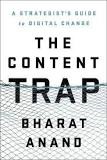 When the record industry downturn began with the introduction of file-sharing services like Napster, studios’ profits decreased and major chains filed for bankruptcy. However, musicians didn’t care as much as one might have surmised, primarily because their CD royalties were limited. At the same time, their share of concert ticket prices was close to 50%, providing nearly 70% of their income. With greater exposure through file-sharing, top musicians saw their incomes skyrocket to as much as $100 million annually and $1 million per concert.
When the record industry downturn began with the introduction of file-sharing services like Napster, studios’ profits decreased and major chains filed for bankruptcy. However, musicians didn’t care as much as one might have surmised, primarily because their CD royalties were limited. At the same time, their share of concert ticket prices was close to 50%, providing nearly 70% of their income. With greater exposure through file-sharing, top musicians saw their incomes skyrocket to as much as $100 million annually and $1 million per concert.
Dr. Anand writes that to understand the relationship between CDs and concerts, you have to understand the business principle of complements. In other words, two products are considered complements if the user’s value from consuming both is greater than the sum of the values from consuming each by itself. CDs and concerts are therefore complements since as the price of CDs goes down and recorded music reaches more individuals, concert demand increases. Before the Internet, concerts promoted CD sales and file-sharing grew; free music promoted concerts, in turn.
Anand also notes how the iPod and iTunes complemented each other. iPod sales were insignificant until Apple launched iTunes, and keeping music costs as low as possible drove more iPod sales. Other complements include the Kindle and Amazon’s ebooks, the iPhone and the App store, and GM cars and GMAC (its auto financing subsidiary), among others. Anand offers four lessons about complements: first, expand your vision, not narrow it; second, dare to price low – but know where to do so; third, exclusive connections — from industry complements to product complements; and, lastly, ask not what your core business is, but know when you’re someone else’s complement. Complements should not be confused with substitutes, which have the same value as each other.
Anand says, “We’re not good at recognizing connections.” Often, positive connections are mistaken for negative ones or negative connections are suspected when a connection doesn’t exist. He notes three reasons for this inability to recognize connections: mindset, language and data.
Anand acknowledges that connecting is “far from straightforward.” Product spillovers and piggyback strategies happen after the fact, not before a company has built connections in another area. The structures companies create to exploit synergies are often fixed, whereas they need to be flexible to pivot with ebbs and flows of connections and in order to adapt to spillover and piggyback strategies. Managing products as portfolios is a better strategy than managing individual products in silos.
Anand adds that brands provide informational connections. The stronger the informational ties across products, the stronger the brand and the benefits of brand marketing. However, the typical recourse of spending more money to market your product is not the right solution. Companies are better off when they recognize, exploit, and create product connections. To do that, companies must spend more time thinking about the products they offer and their competitors. Success versus failure is not natural but is based on management’s choices. In short, companies should expand to preserve.
*Author’s note: Unless otherwise noted, the factual observations and images included herein are the intellectual property of Dr. Bharat Anand and/or Random House Publishing Group.











